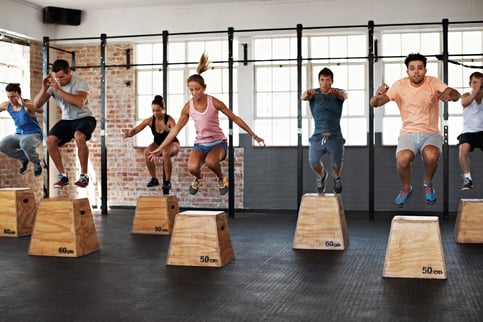 This summer just got 10x hotter with new and exciting group fitness classes for NIFS Fitness Center members! We are kicking off June with the addition of LIFTOFF and Girls Just Wanna Have Fun to our group fitness schedule. Coached by me, Kennedy, these classes are designed to engage members, introduce functional strength training, and more importantly bring you closer to your fitness goals. Let’s take a closer look at how these are formatted so you can have a better understanding of what to expect when you attend.
This summer just got 10x hotter with new and exciting group fitness classes for NIFS Fitness Center members! We are kicking off June with the addition of LIFTOFF and Girls Just Wanna Have Fun to our group fitness schedule. Coached by me, Kennedy, these classes are designed to engage members, introduce functional strength training, and more importantly bring you closer to your fitness goals. Let’s take a closer look at how these are formatted so you can have a better understanding of what to expect when you attend.
LIFTOFF: a strength and conditioning class designed to boost athleticism! The goal of this class is to improve speed, power, plyometrics, and mobility. It is the perfect complement for runners, bikers, rec league athletes, and anyone looking to improve their athletic abilities!
Formatted with plenty of variety, you can expect the same class structure each day with differing workouts. One day may consist of explosive lifts developing power, while day two might focus on sprints and speed training. By attending both offerings each week you will incorporate a good variety into your routine.
Mark your calendar for Mondays and Wednesdays at 9:00am (EST) to boost your athleticism with LIFTOFF!
Girls Just Wanna Have Fun: a functional, female-focused strength class designed to introduce you to weightlifting, improving form, and teaching proper body mechanics all while building strength in a FUN and INVITING atmosphere.
This class will give you more of a personal training feel but in a group setting. You can expect to have the support of others to build your confidence in the gym and in your abilities to lift weights in the gym.
Block your schedule on Tuesdays and Thursdays at 9:00am (EST) to spend an hour with your own girl gang in the gym!
Members have access to all our group fitness classes, if you are not a member and want to try group fitness try out our FREE Tabata in the Park offerings at White River State Park just behind the NCAA. Offered all summer long on Tuesdays and Thursdays at noon! Follow us on social media for updates on these offerings as they are weather permitting!


 In the most basic definition, plyometrics refers to jump training. Known to be a key component of many sports, such as basketball, soccer, gymnastics, and football, plyometric training can enhance athleticism, strengthen the most powerful muscles in your body, and much more.
In the most basic definition, plyometrics refers to jump training. Known to be a key component of many sports, such as basketball, soccer, gymnastics, and football, plyometric training can enhance athleticism, strengthen the most powerful muscles in your body, and much more.